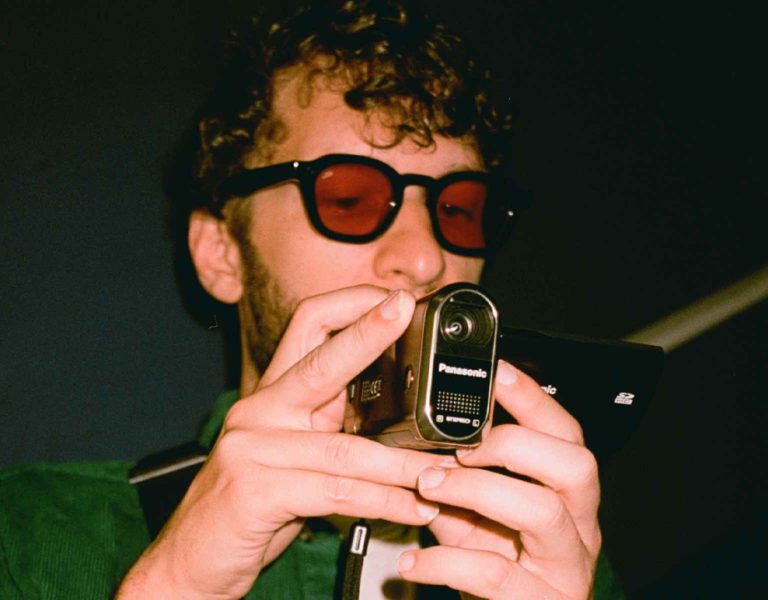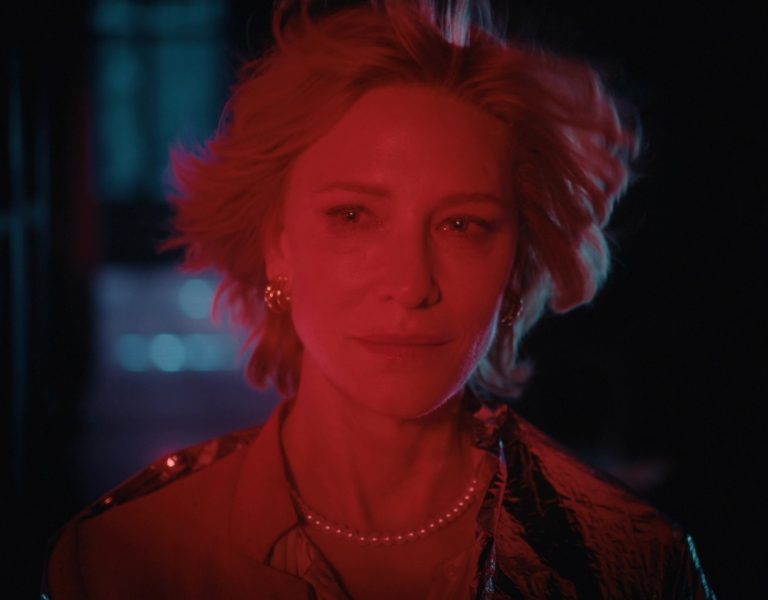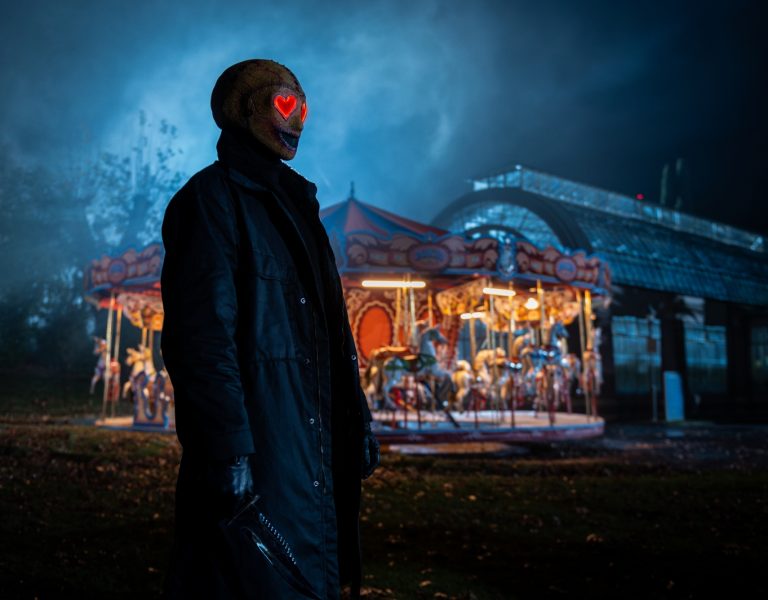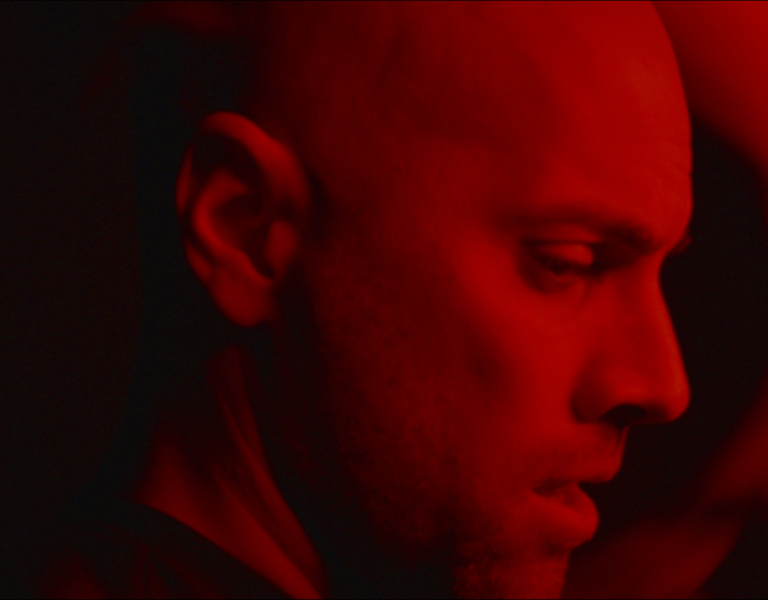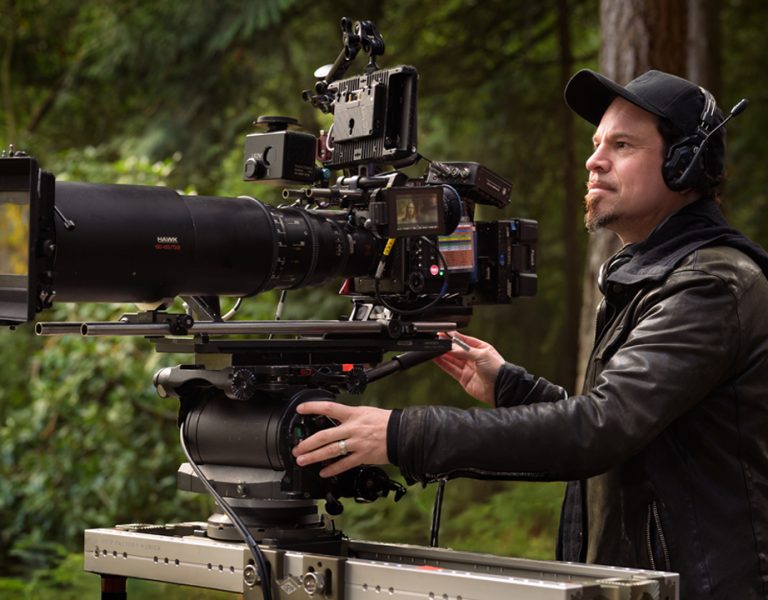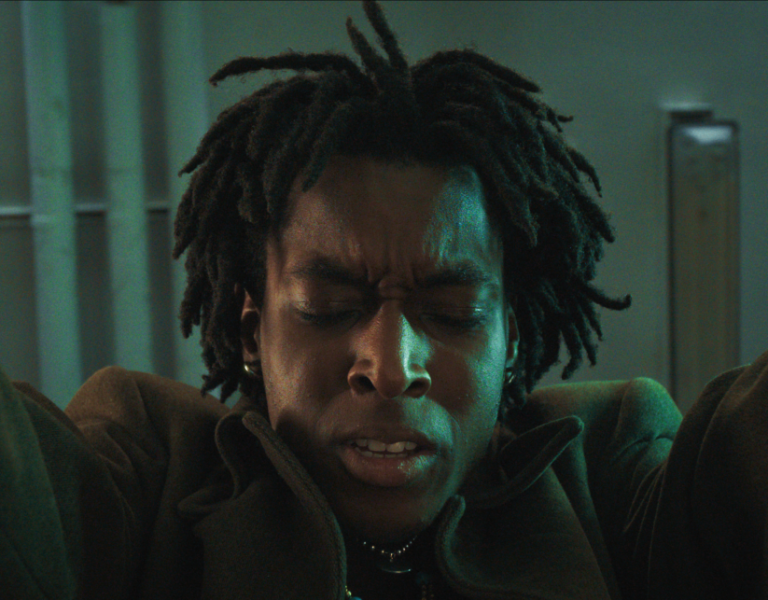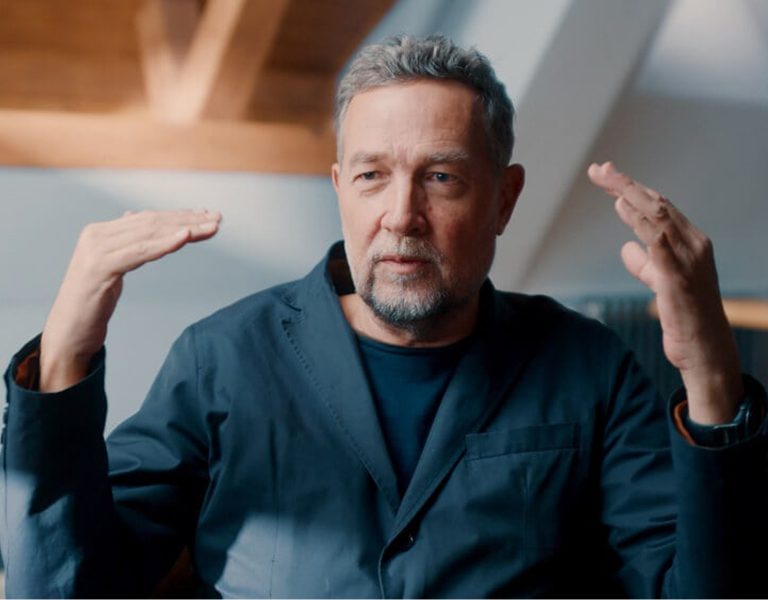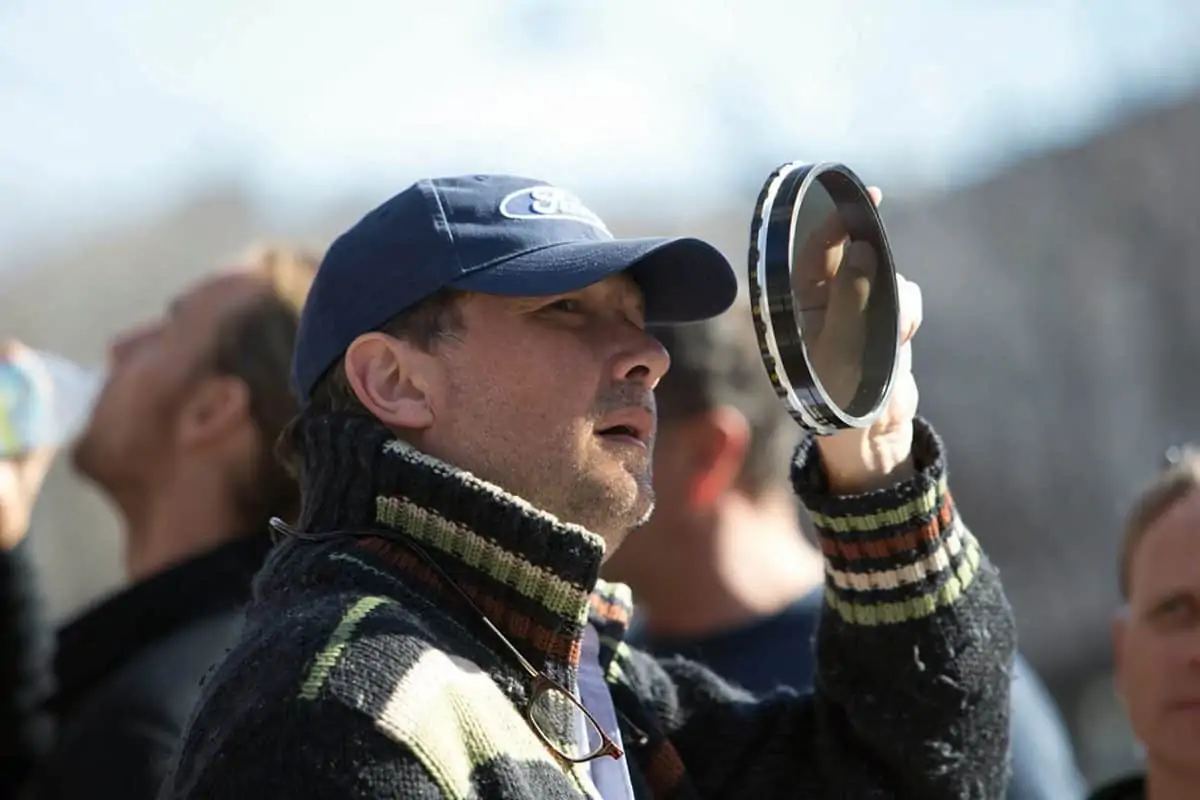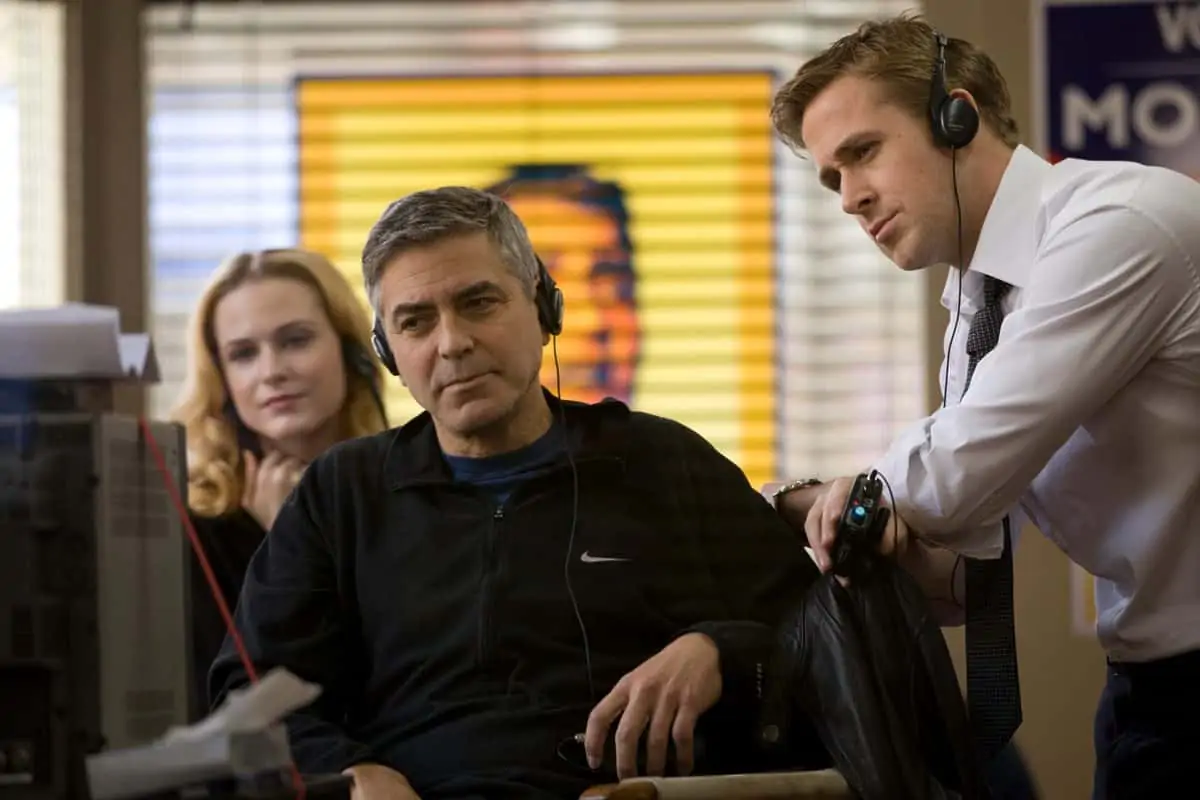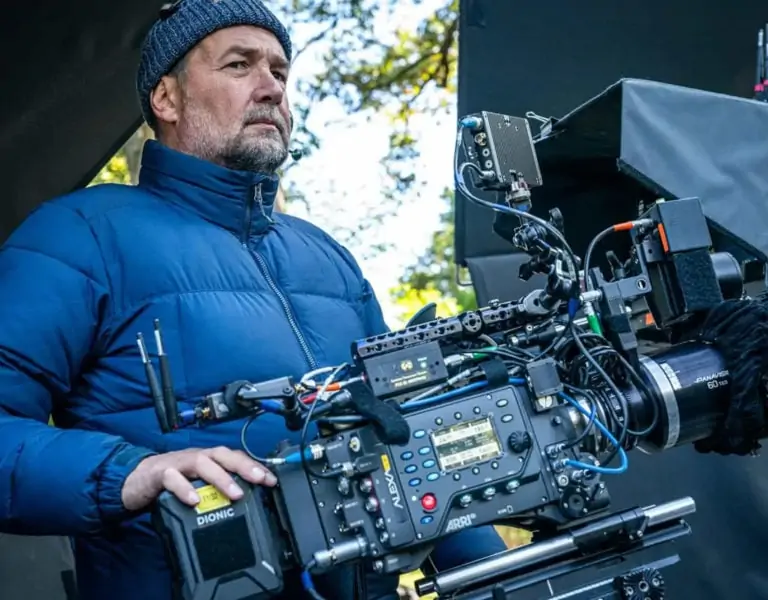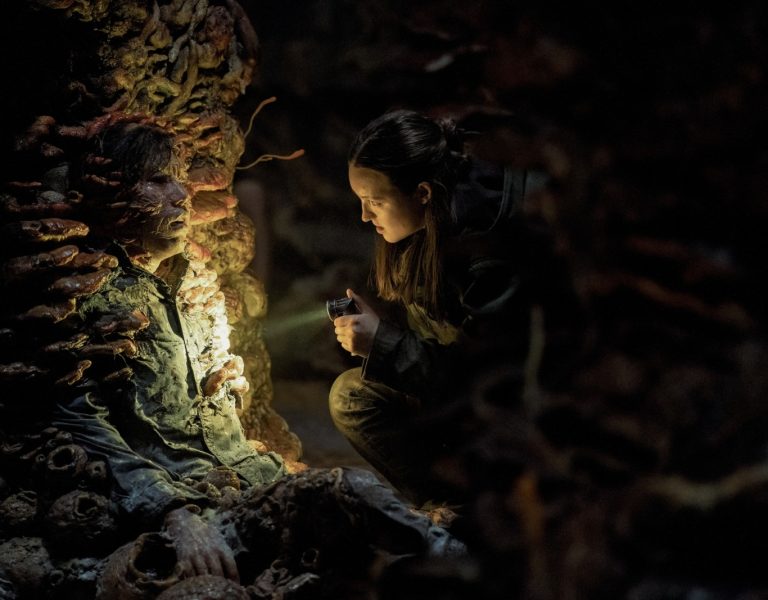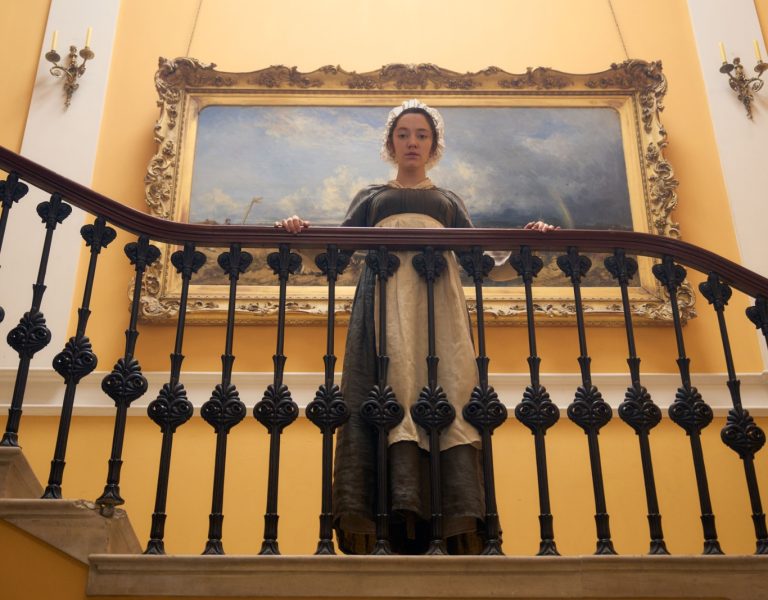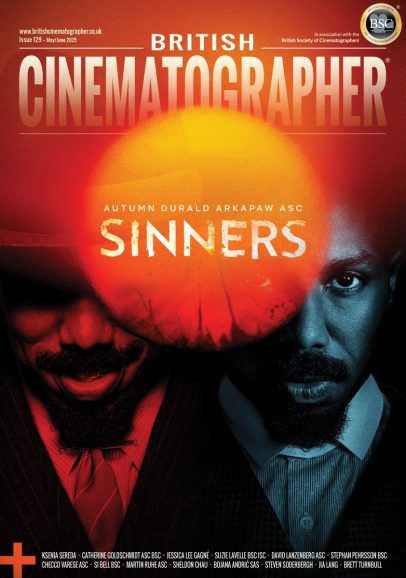TIMES THEY ARE A-CHANGIN’
Skilled in immersing audiences in performance-focused stories such as Johnny Cash biopic Walk the Line, Phedon Papamichael ASC GSC GCA and James Mangold explored another musician’s beginnings, sharing insight into iconic singer-songwriter Bob Dylan’s early career.
When sharing the extraordinary tale of Bob Dylan’s four-year rise from unknown to icon, the music would always play a starring role in the storytelling. As A Complete Unknown co-writer and director, James Mangold says, “This is a story about a specific moment in a person’s life, not their whole life. And it is about a world where so much is communicated with song.”
Accompanying the soundtrack charting the birth of a star and cultural shifts in society is a visual approach carefully crafted by Mangold and Phedon Papamichael ASC GSC GCA, a cinematographer with whom he created productions including Walk the Line, Ford v Ferrari, and 3:10 to Yuma.
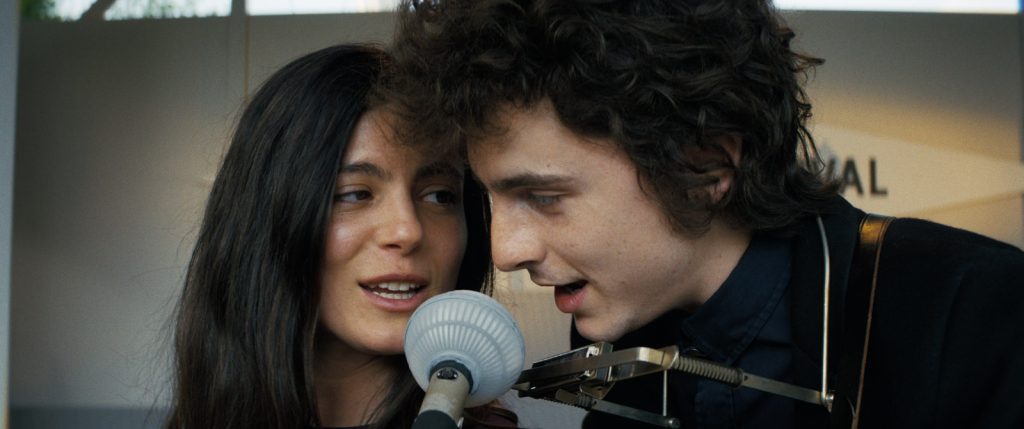
From their first collaboration, 2003 thriller Identity, it was clear to Papamichael that in addition to being a talented writer and actor’s director, Mangold had an excellent filmmaking eye. “When he said, ‘Boom down a little, push in slowly.’ I thought, ‘This guy is really good,’” says the cinematographer.
“There’s a reason we’ve made seven movies together: our similar sense of composition and lighting; James is a still photographer; we’re the same age; grew up with the same cinematic influences; his dad is a painter and so was mine. He’s really my co-author when it comes to making films.”
The concept of A Complete Unknown – Papamichael and Mangold’s latest creative project – marks their third ‘60s movie in a row, with Indiana Jones and the Dial of Destiny and Ford v Ferraris taking place in the same period. This time the film focuses on a slice of Dylan’s life and his significant role in music history.

When Mangold first approached working with the material of Elijah Wald’s book Dylan Goes Electric, he was struck by its fable-like qualities. As well as capturing the essence of the period in musical history and intimate performances, he wanted to depict the artistic and Boheme energy of early-‘60s New York’s where Dylan’s career began.
“Just as we were about to get going the pandemic hit. We figured a movie like this, taking place in little clubs with many period extras, would be too difficult to pull off,” says Papamichael. However, the pandemic pause presented cast and crew with additional time for prep, enabling lead actor Timothée Chalamet to perfect his portrayal of Dylan and play the guitar and harmonica to a high standard to deliver, as Papamichael refers to it, an “astonishing performance”.
Mangold imagined “a textured movie that was gritty and grimy with peeling plaster and decaying walls and rust and soot and cigarette butts and trash,” says the director’s production designer of the last decade, François Audouy. “Modern day New York has a more antiseptic quality now though. It’s been sandblasted and cleaned up…It turns out that the other side of the Hudson River looks more like New York than New York does now.”
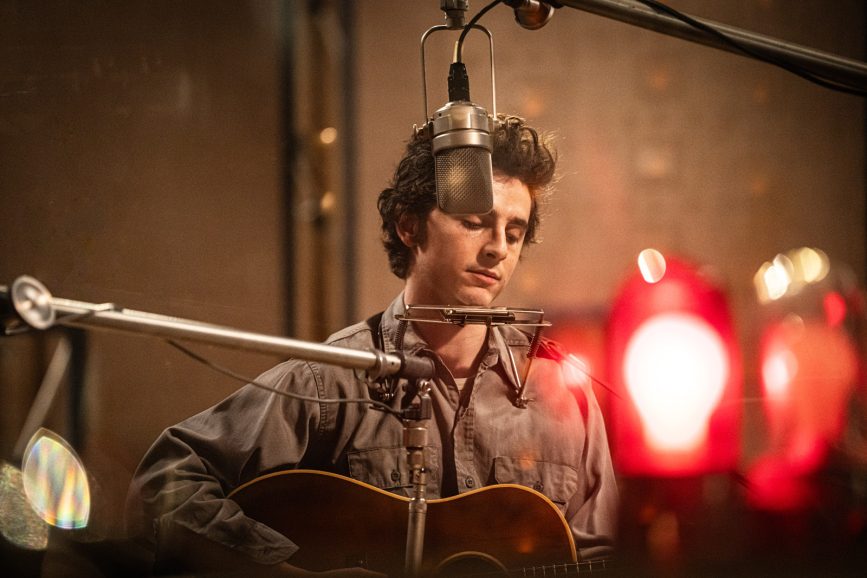
Therefore Jersey Avenue in downtown Jersey City was transformed into MacDougal Street in Greenwich Village, New York, an area teeming with clubs, galleries and cafes packed with creatives and a central setting for the film, and the musical movement Dylan was set to lead.
Old theatres and bars in New Jersey served as interiors for settings like Carnegie Hall and music venue The Gaslight. Outdoor music festival scenes in Monterey, California and Newport, Rhode Island – critical moments, particularly the 1965 Newport climax – were recreated at a park near Westfield, New Jersey, that was large enough to build stages. One of the largest set builds was Dylan’s 4th Street apartment, the interior of which was built on a soundstage.
Just as the filmmakers started to lookbook visualise the film in cinematic form, exploring spaces with collaborators such as costume designer Arianne Phillips, a series of industry strikes shut down production for almost another six months. When the cast and crew reunited in the spring of 2024, key creative resources helping them complete the world building included a 200-page lookbook created by Audouy and photographic references from the likes of William Eggleston, Saul Leiter and Ernst Haas.
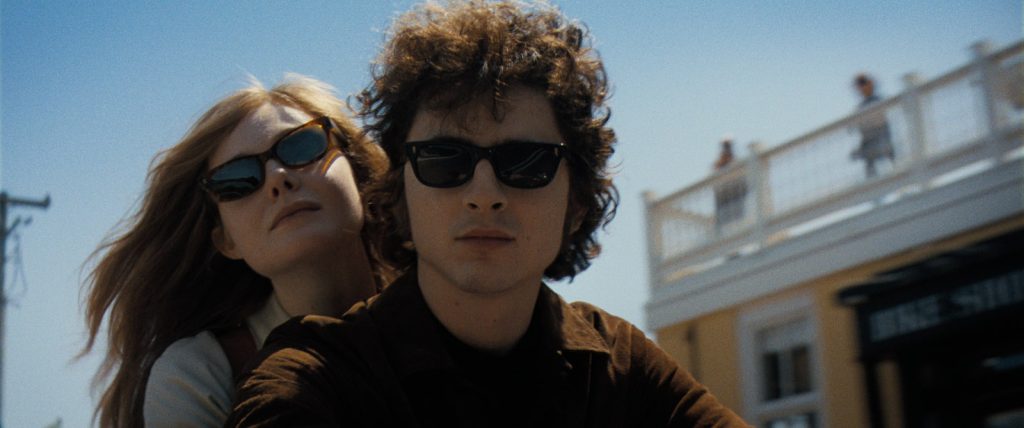
“Bob’s early life, especially his apartment, is well documented, so for set dressing there were lots of references for aspects such as his record player, desk and typewriter,” says Papamichael.
“The movie’s visual curve is that Bob arrives in Manhattan in ‘61 in his raggedy clothes, and guitar on his back and it’s supposed to be winter. So we wanted a wintry grey desaturated look when he visits his hero, singer Woody Guthrie, in hospital. I wanted muted browns in the small, dark clubs and venues with just little tungsten practicals lighting the stage,” says Papamichael.
“As he discovers and reinvents himself and is influenced by various things, the wardrobe changes, venues become bigger and although I maintained correct period lighting, it goes from muted, desaturated tones to a more saturated, contrasty and vibrant Kodak-chrome feeling. All elements in the frame become more vivid, and the editorial pace increases.”
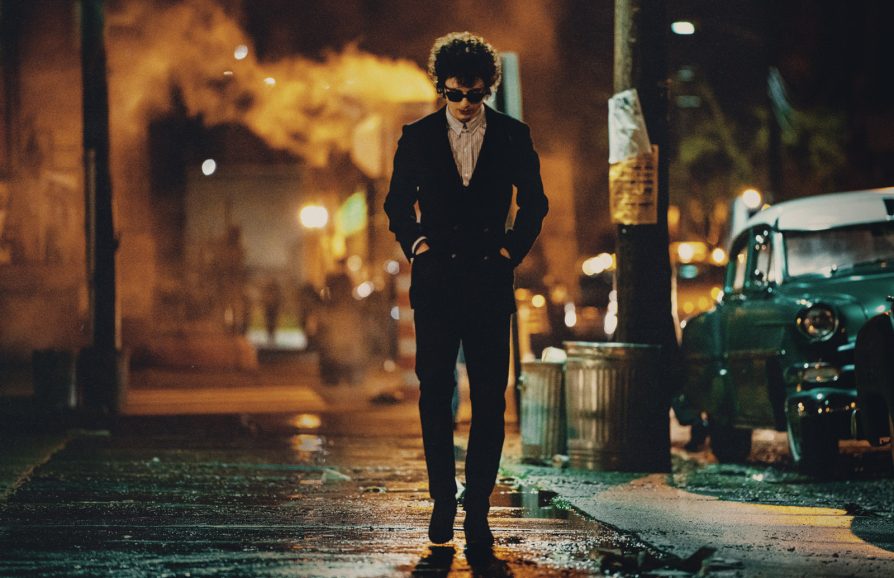
Storytelling choices
Papamichael initially suggested shooting in black-and-white and opting for “a little rougher shooting style” than he and Mangold normally adopted. However, they settled on colour and wide screen composition, as the director enjoyed their tried and trusted approach to cinematic storytelling.
“We didn’t want to force a style on it,” says Papamichael. “Even though the Dylan references and lookbooks of New York street photographers were mostly black-and-white, they were still great inspirations when determining the approach in terms of texture and contrast.”
Movies influencing the visual language included The Conversation, The French Connection, many Gordon Willis ASC productions such as Klute, and a film Papamichael shot 20 years ago – Wim Wenders’ The Million Dollar Hotel.
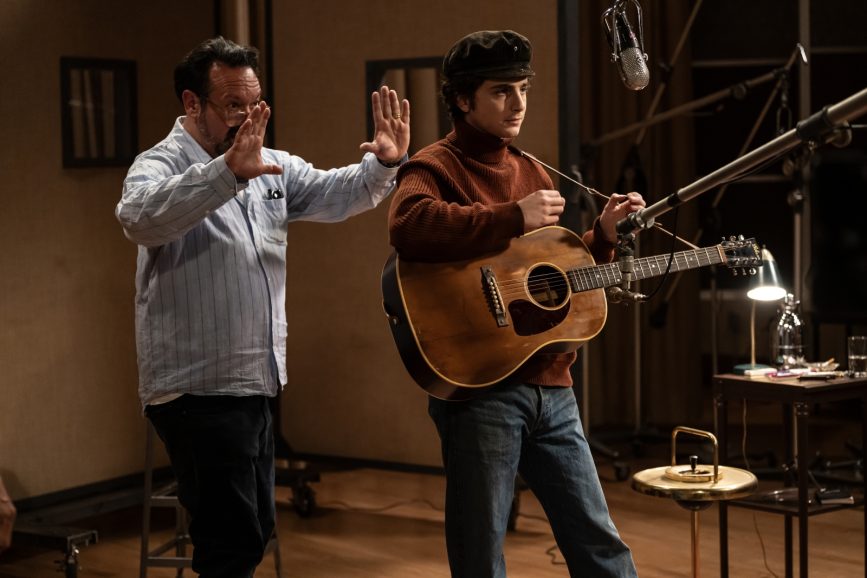
“I examined what really makes that anamorphic look when shooting with vintage lenses because The Million Dollar Hotel was shot on old Panavision C Series which we wanted to explore for A Complete Unknown. That film was shot 800 ASA 35mm Kodak stock – a quality I wanted to emulate. The Kodachrome look street photographers of the period achieved with primary colours and saturated and rich blacks was something I was going for too which we did with Ford v Ferrari.”
Ford v Ferrari was also shot on prototype vintage expanded anamorphic lenses from Panavision custom built by lens specialist Dan Sasaki. “It was the first time that was done. After that, the larger format digital approach with expanded lenses became popular,” he adds.
“When I went on to shoot The Trial of the Chicago 7 and Indiana Jones on expanded anamorphics, I noticed the lenses were starting to lose a little of the initial quality I loved. James and I didn’t want those films to be too optically perfect. We liked the specular flaring and warmer glass and I didn’t want too much top and bottom falloff, so Dan created another version he called a hybrid.”
The front element of the hybrid lens from the B Series glass from the ‘60s and ‘70s achieved the flaring and colour the filmmakers desired, combined with the close focus ability of the T Series which is not possible with the C Series. Working on performance-focused productions such as biopic Walk the Line taught them close proximity allows the audience to get inside a character’s head. Shooting objective shots from an audience perspective does not have an intense or immersive effect.
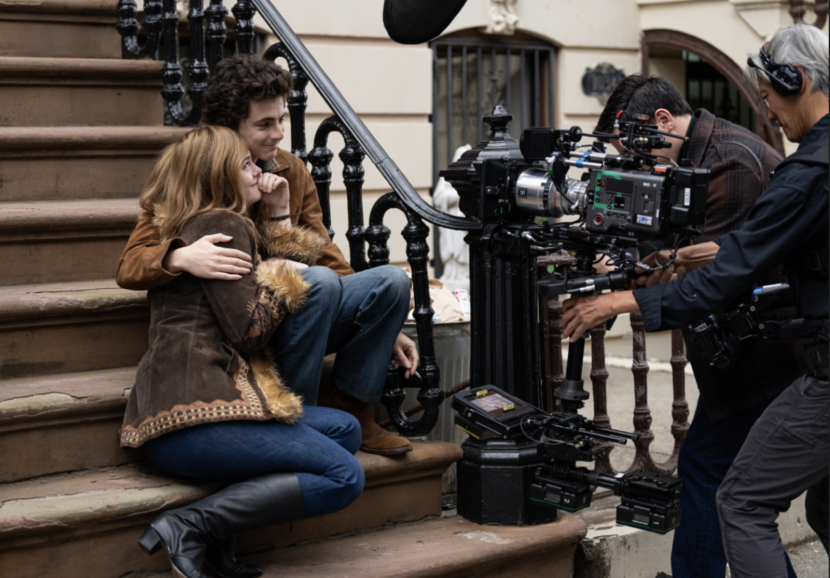
“We’re always physically close with the camera,” says Papamichael. “When we do a close-up, we don’t just swap to a longer lens, we’re really within under two feet of Timothée for Dylan’s performances on stage. The anamorphic aspect ratio allows for close-up shots that still capture the surrounding environment, including blocking and interactions, and don’t isolate the character. I choose to shoot a very deep stop, because with large format typically, everything falls off. Although it’s anamorphic, I want to see the background, feel the textures of the brown stone, streets, period cars.”
Walk the Line also taught them about working with instinctive, intuitive and fluid actors such as Joaquin Phoenix who played Johnny Cash. “It’s not always based on creating a shot list, and telling an actor where their mark is or what part of the song to sing,” adds Papamichael. “For the final concert in Newport in A Complete Unknown, when we played three songs it became obvious Timothée was just so good, it would be crazy not to let him perform and sing live while the camera rotates around him and the shot is illuminated by real stage lighting.”
Similarly Mangold’s skill as a director was on display in Ford v Ferrari’s gripping race footage. “He has the ability to put you in the protagonist’s emotional state by being intimate, physically with the camera when the crew in the car shoot close-ups,” adds Papamichael. “Just like a performer on stage, Christian Bale (Ken Miles) went through all the emotional beats during the races, putting the audience in that cockpit just as we put them on stage with Timothée,” says Papamichael.

A reactive approach
Papamichael’s desire to use minimal lighting equipment led him to explore different camera options. Having shot a recent Apple commercial using the Sony FX3, he discovered it was possible to shoot in low light conditions at 12800 ASA.
“It looked clean on the monitor, so when deciding on the look for A Complete Unknown, I tested the Sony Venice 2,” he says. “It’s the first time I’ve shot a feature on it and although it’s native 3200 ASA, I wanted to try shooting at 6400 and 12800 with the lenses and lighting I planned to use. Its sensitivity to light impressed me and when I projected it, I didn’t see any problematic noise, even at 12800. It captured the texture and detail of night scenes beautifully.”
As well as adopting a traditional look in terms of format and composition, Papamichael wanted lighting to be “natural, logical and reactive to what was in the space” and for scenes to not seem “overly lit or have a Hollywood look”, achieved partly through techniques such as using the bounce off the white sheets in the apartment set as the only fill.
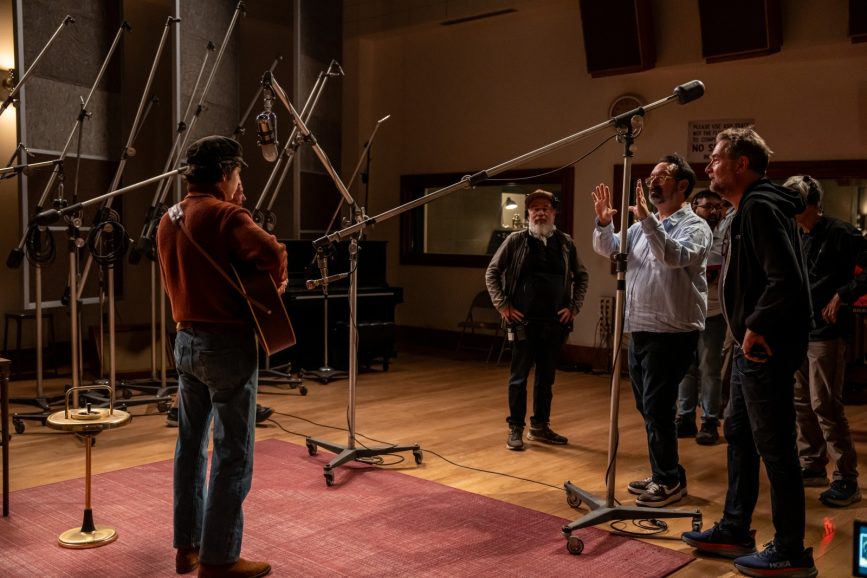
Papamichael and gaffer John Alcantara – with whom worked on Christy Hall’s Daddio – enjoyed the freedom digital capture with the Venice 2 offered for night exteriors of Chalamet walking down the sidewalk with only two light sources in addition to ambient street light, storefronts, traffic lights and car headlights.
“Even the city night sky had exposure, although to the eye it was pitch black. It was gorgeous. So I kept everything at low levels, even my light sources, no Condors, no back lights. In addition to Astera Titan Tubes, I used Rosco DMG Dash lights with a silicon dome attached which were great when Timothée wore sunglasses at night as the DMG Dash is round and doesn’t look like a movie light when caught in reflections.”
Papamichael enjoyed working with the small 12-channel, wireless, slider dimmer board (DMX-IT) to control the DMG Dash which gaffer David Sinfield introduced him to on Indiana Jones. When Papamichael moved on to Daddio – featuring many driving sequences shot against LED walls – he mentioned the system to gaffer Alcantara who found it invaluable for the reactive way they needed to control lighting based on content on the screens.
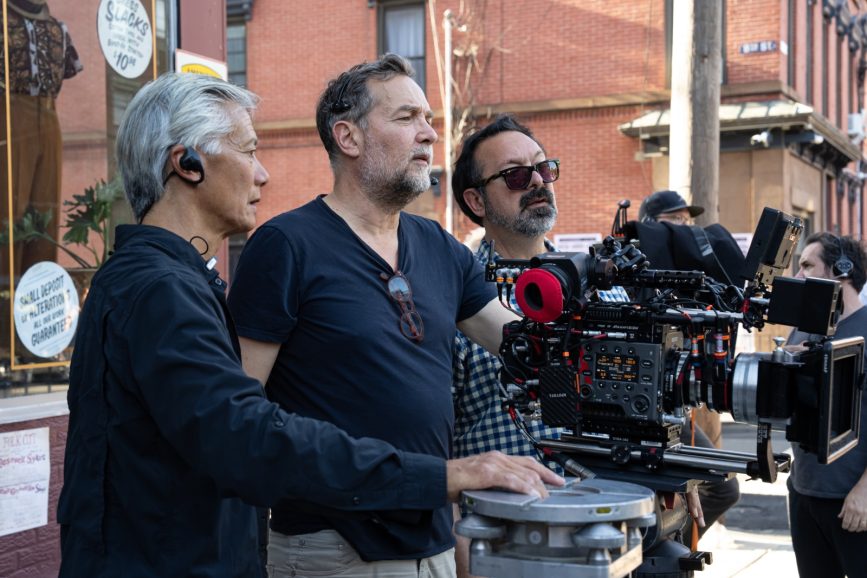
“On A Complete Unknown we continued working in that style, collaborating with the same dimmer board operator Michael Hill and customising the board,” says Papamichael. “I can walk with the small wireless DMX-IT or sit by the DIT monitor during the take and control it as needed, pre-programming colours and bringing them up as he walks. It’s like live mixing.”
Lighting the whole space, rather than each shot gave actors freedom to move where they wanted, with minimal fixtures used for interiors. Papamichael spent time with the set decorators picking practicals and trying to use low-wattage tungsten bulbs. “I love using tungsten when shooting at the speeds we were with the Venice 2. Hard sunlight pushes could just be 2Ks and 5Ks. Instead of hanging a bank of tungsten 10Ks, you bring in a Parcan here and there and bounce off the floor and furniture creates the necessary fill.”
The later concert sequences were some of the most challenging to light because the crew had to build the stage at a park in New Jersey to double up as the location for a concert in Monterey, reconfigure the stage to switch to a Newport Festival performance and change it again for another show in Newport in 1964.
“It’s difficult when shooting a day exterior concert and period extras had to go through hair and wardrobe and get in their seats just as the sun comes out,” says Papamichael. “That’s where experience helps. I’ve become a better DP over the years because I’ve been able to foresee, organise and schedule more efficiently. Key grip Brendan Lowry’s great eye for lighting was helpful in such situations. It was a big grip production, dealing with a variety of concerts and precisely controlled light. The sun started behind the stage and came around to the front, so we constantly needed to juggle that and float big silks.”
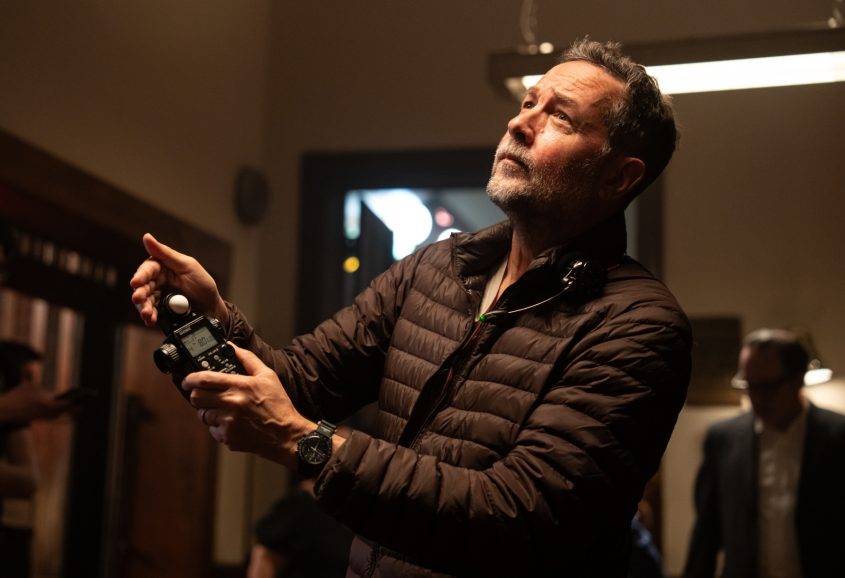
Fluid and organic
Papamichael praises camera operator supremo P. Scott Sakamoto ACO SOC for the impact of many sequences as well as the talent of 1st AC Craig Pressgrove, with whom he worked on Trial of the Chicago 7. Sakamoto’s skilful operating on A Complete Unknown won him Camera Operator of the Year in Film at the Society of Camera Operators Awards which Papamichael attributes to him being “reactive and having fine-tuned his operating on performance films such as Maestro and A Star is Born”.
In addition to working with the Venice 2 and Steadicam rig, Sakamoto used Sony’s Rialto extension system on occasions when filming in confined spaces or some driving sequences. Papamichael likes to treat sets like practical locations, “so I sometimes squeeze the camera into a corner. It’s the same with lighting placement, I respect the limitations of the small apartment set”.
As 90% of the movie was shot on location, with multiple camera location moves a day, Papamichael wanted to stay flexible, especially when capturing Chalamet’s freeform performance, without extensive rehearsals being carried out. Blocking was examined in detail, with Mangold and Papamichael’s similar sense of composition being crucial along with their understanding of how each scene is put together from an editorial perspective and each shot’s sweet spot.
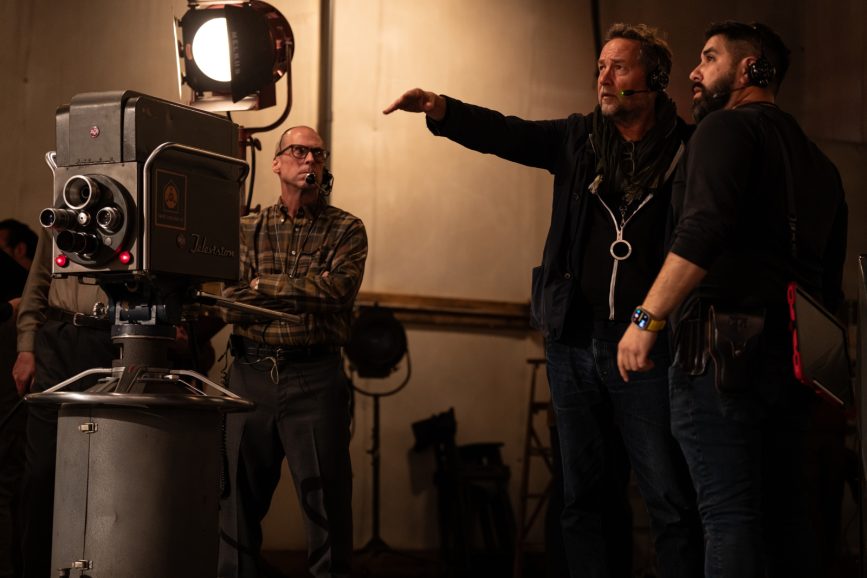
“It’s not just about there being a long crane shot; it’s looking at where the crane will move in the scene. It’s essential for a cinematographer to have been in the cutting room too. If they understand what the essence of every scene is, why it exists, and what story it’s telling, they can identify the shots,” adds Papamichael.
“We also respond to elements on the day on set when the actors come in, especially with actors like Timothée, because he’s also discovering the scene, sets and locations, so we want to see what he does.”
Efficient communication between Sakamoto, Papamichael and Mangold resulted in a fluid and organic process. When capturing the many musical performances, Papamichael speaks to Sakamoto on comms, but also likes to “let him roam free, picking when he will go into minimum focus, but then wrap around Timothée’s back. We tie in the audience, people in the wings observing him, and then land on a three-quarter front shot from the other side. It’s like very complicated, high-end live concert coverage.”
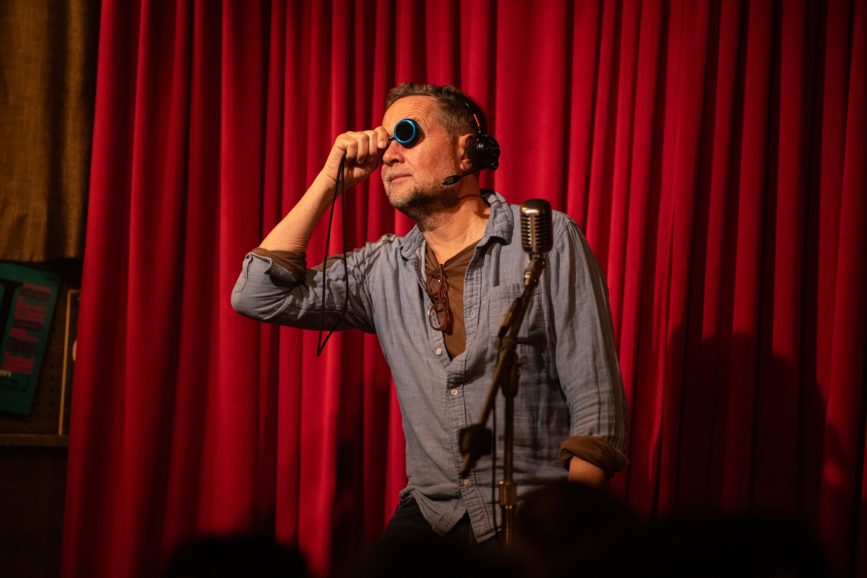
Similar sensibilities
Papamichael worked with FotoKem’s David Cole, a colourist with whom Greig Fraser ASC ACS explored SHIFTai (Analogue Intermediate) film-out techniques on Dune: Part Two and which Papamichael also wanted to utilise. Testing began in pre-production in regards to LUT development and determining the SHIFTai process and stock.
“There are many amazing colourists who have perfected emulating celluloid in the DI process but by having the photochemical lab, FotoKem can laser out to film and then scan back, all in-house,” says Papamichael, who found going to 5203 (Kodak 50 Daylight) negative as intermediate, delivered the grain and colour he desired and achieved the filmic and analogue characteristics to help ground the story in the early 1960s.
He feels this is “currently a great option to take advantage of the new digital cameras, but also get all the qualities we loved about film. Combined with shooting at 12800 ASA and on hybrid prototype anamorphics at an 8 or 11 stop on night exteriors, without having to use big condors, it produced beautiful results”.

Dailies in production utilised a simpler form of emulation, and once Cole came to the final DI, a complete and comprehensive emulation was used during the grade until final sign off, at which stage the emulation was removed and the graded images were filmed out onto the negative.
“Once processed, the reels were scanned in, went through a match-back process to allow the scans to work under the show LUT, dust busted and final creative tweaks were applied before making the final renders,” adds Cole.
“Even with a very robust film emulation, the beauty and randomness of the analogue process truly elevated the movie, allowing the audience to be immersed into the early years of Bob Dylan. Phedon’s use of Venice 2 also allowed for deep focus in low light or naturally lit situations, and by combining this with clever use of shapes, digital lens falloff and other creative uses of the colourist’s toolbox – in this case DaVinci Resolve – we could visually bring a musicality to what the audience saw.”

Papamichael notes the difference in films that have been through a film out process as the colours react a certain way and the contrast is altered. “It’s hard to put your finger on it, because you can match the grain, even add projector gate, movement, and flicker with digital tools like LiveGrain, but this is the real thing. Some might say, ‘If you want all of that film-look, why don’t you just shoot on film?’ But I couldn’t shoot on film at 12800 ASA and achieve the night exteriors in the way I want. I’m not opposed to film of course, and I’ve shot 40 movies on celluloid, and maybe only 15 on digital.”
Whether opting for digital or celluloid capture, Papamichael believes collaborating with filmmakers with the same taste and visual ambitions is vital. “I always tell young cinematographers to find the director you match with and has similar sensibilities regarding how they want to tell the story. Only then will you really produce good work because you can’t do it alone, and you don’t want to fight the director all the time. There are hundreds of ways to tell each story and finding somebody you’re in synch with will help you discover the right creative path.”

